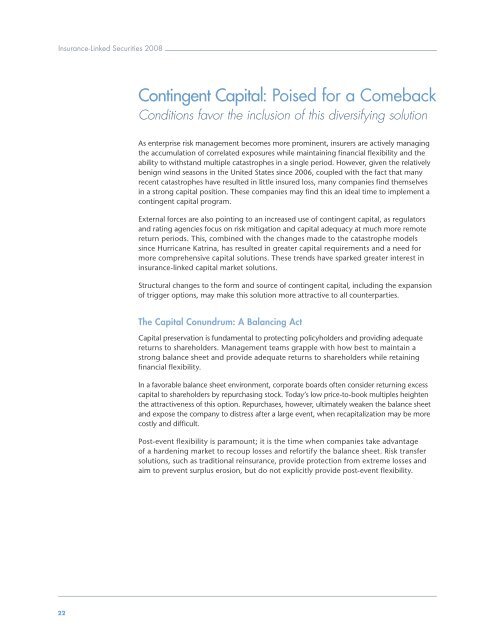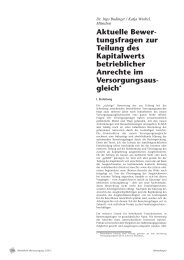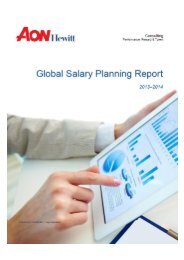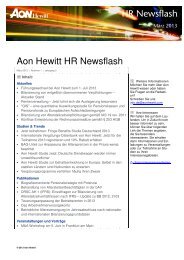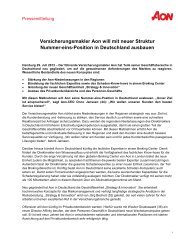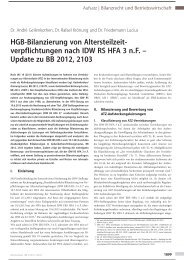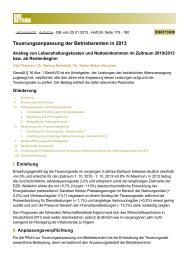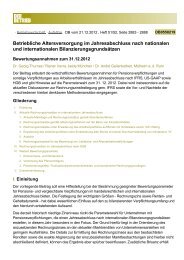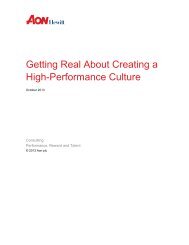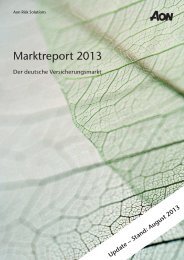Insurance-Linked Securities Report 2008 - Aon
Insurance-Linked Securities Report 2008 - Aon
Insurance-Linked Securities Report 2008 - Aon
You also want an ePaper? Increase the reach of your titles
YUMPU automatically turns print PDFs into web optimized ePapers that Google loves.
<strong>Insurance</strong>-<strong>Linked</strong> <strong>Securities</strong> <strong>2008</strong><br />
22<br />
Contingent Capital: Poised for a Comeback<br />
Conditions favor the inclusion of this diversifying solution<br />
As enterprise risk management becomes more prominent, insurers are actively managing<br />
the accumulation of correlated exposures while maintaining financial flexibility and the<br />
ability to withstand multiple catastrophes in a single period. However, given the relatively<br />
benign wind seasons in the United States since 2006, coupled with the fact that many<br />
recent catastrophes have resulted in little insured loss, many companies find themselves<br />
in a strong capital position. These companies may find this an ideal time to implement a<br />
contingent capital program.<br />
External forces are also pointing to an increased use of contingent capital, as regulators<br />
and rating agencies focus on risk mitigation and capital adequacy at much more remote<br />
return periods. This, combined with the changes made to the catastrophe models<br />
since Hurricane Katrina, has resulted in greater capital requirements and a need for<br />
more comprehensive capital solutions. These trends have sparked greater interest in<br />
insurance-linked capital market solutions.<br />
Structural changes to the form and source of contingent capital, including the expansion<br />
of trigger options, may make this solution more attractive to all counterparties.<br />
The Capital Conundrum: A Balancing Act<br />
Capital preservation is fundamental to protecting policyholders and providing adequate<br />
returns to shareholders. Management teams grapple with how best to maintain a<br />
strong balance sheet and provide adequate returns to shareholders while retaining<br />
financial flexibility.<br />
In a favorable balance sheet environment, corporate boards often consider returning excess<br />
capital to shareholders by repurchasing stock. Today’s low price-to-book multiples heighten<br />
the attractiveness of this option. Repurchases, however, ultimately weaken the balance sheet<br />
and expose the company to distress after a large event, when recapitalization may be more<br />
costly and difficult.<br />
Post-event flexibility is paramount; it is the time when companies take advantage<br />
of a hardening market to recoup losses and refortify the balance sheet. Risk transfer<br />
solutions, such as traditional reinsurance, provide protection from extreme losses and<br />
aim to prevent surplus erosion, but do not explicitly provide post-event flexibility.


